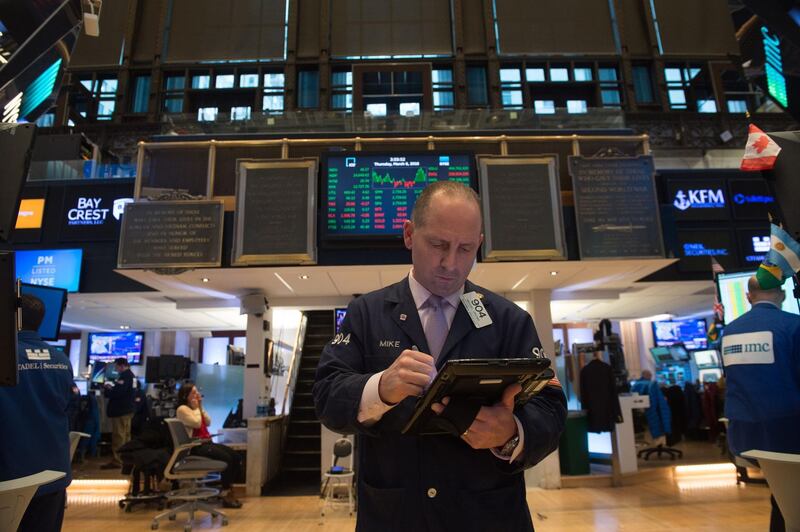Global markets have started the year in skittish fashion. Fears about emerging inflation in the US and elsewhere has focused investor attention on the 10-year Treasury yield, the so called “risk-free” rate of return. As it flirts with the 3 per cent level, investors are reviewing the relative return that can be wrung from equities before the year is out. Can they beat this “risk-free” rate by owning stocks?
Which begs a further question: with the world’s major central banks still sitting on policy rates sub-2 per cent, why are investors not more interested in good dividend paying equities? The opportunity to participate in some equity-like capital gains with the benefit of inflation beating 5-6 per cent dividend yields should be attractive as a core portfolio holding. Even more so if traditional core bond holdings are vulnerable to a sell-off in fixed income markets spooked by inflation.
But investors are wary about strong dividend payers because they fear the payouts are not sustainable. And recent history has fuelled that prejudice. The banks were traditionally among the strongest yielding stocks but that income stream stopped immediately with the global financial crisis. Other companies with liquidity issues also suspended their dividend programmes.
But while fear of the recent past may have dampened enthusiasm for this style of investing, in reality the opportunity for income investors is only growing. Global dividends broke new records in 2017, according to asset management group Janus Henderson, and at this run rate will probably rise again in 2018. At a headline level, dividends were up 7.7 per cent. That is the fastest since 2014 and hit $1.252 trillion last year.
What was the reason for this corporate generosity? Janus Henderson cites a combination of higher economic growth and rising corporate confidence. “While equity markets have been volatile recently, dividend payments are reflective of corporate health and economic conditions and we expect them to be much more stable.” says Ben Lofthouse, director of global equity income at Janus Henderson.
This is not just a developed market phenomenon which the US has led in recent years. Global dividends are forecast to rise 6.1 per cent in 2018 with expansion coming from every region of the world. Companies in China, Russia, Japan and Hong Kong have all made notable increases in total dividends paid, according to Janus Henderson’s data.
_______________
Read more:
Barclays delivers on dividend despite 2017 disappointment
Citigroup reports $18 billion loss on one-time tax charge
_______________
This is good news for income seekers with an international mindset, as relying on a single country income ETF (exchange-traded fund) or actively managed fund can over-concentrate investors in a few sectors, i.e. banks, utilities, energy and telecoms. This is particularly true of the UK which has a deep culture of equity income investing, but has witnessed Brexit related outflows over the last year.
In the end, says Lofthouse, run the slide rule carefully over your chosen investment. “Balance sheet strength and free cash flow are both critical to the sustainability of dividends.” Key is the so-called dividend cover ratio, or how many times the net income can cover the dividend. Anything less than two-times could be worrisome. He believes some industry sectors are more attractive than others at the moment. “Telecoms is the only sector that hasn’t grown dividends this year. While oil companies have, they are not getting re-rated because the market trades on sentiment, so we might have to wait a year or so to see that happen,” Lofthouse added.
And sentiment, and a view on the growth cycle, is critical to this story. It comes down to market investing style and fashion, says Stephen Macklow-Smith, head of European equity strategy at JP Morgan Asset Management. “At the moment markets are more interested in growth than value or income,” he said. However Macklow-Smith, who has recently been doing some work on this trend, added: “While income style investing is highly correlated with value, unusually, income has outperformed value by 70-80 per cent over the last few years.”
So is it time to raise the income weighting in your portfolio? Macklow-Smith advises watching the corporate reporting season, and whether it still underpins the growth rather than income approach. “Continued strong economic and earnings growth should help to support further gains for US equities, along with other less expensive equity markets. Therefore, yield stocks may underperform the overall market because of the style bias,” he predicts.
In other words, while record amounts of money are being pushed back to shareholders through rising dividend payouts, the sweet spot for rising capital returns from these companies may still be in the future.
Geoff Cutmore is co-anchor of Squawk Box, CNBC’s flagship show in Europe
The National and CNBC International are global content sharing partners.






